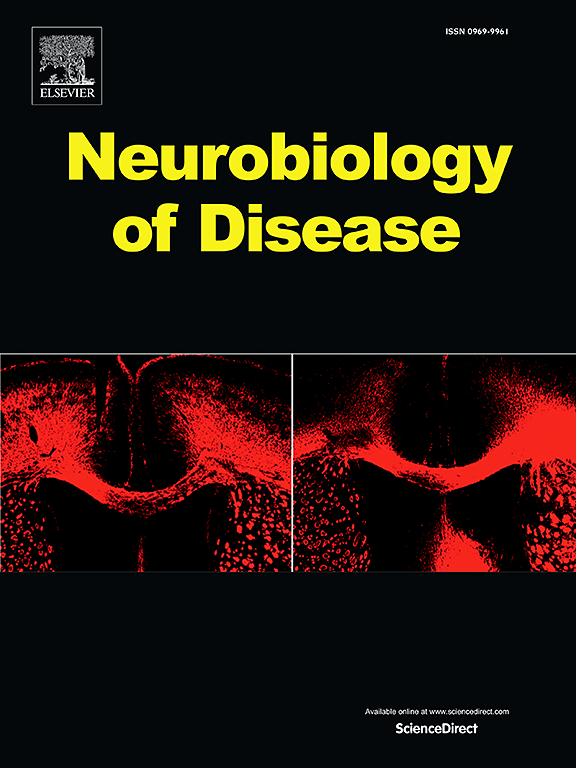Excessive expression of progranulin leads to neurotoxicity rather than neuroprotection
IF 5.1
2区 医学
Q1 NEUROSCIENCES
引用次数: 0
Abstract
Frontotemporal dementia (FTD) is an early onset form of dementia characterized by frontotemporal lobar atrophy accompanied by behavioral, personality, language, and motor deficits. Heterozygous mutations in GRN gene encoding progranulin (PGRN) are the genetic causes of FTD. Since PGRN is a neurotrophic and anti-inflammatory factor, most FTD-related PGRN mutations are thought to cause FTD due to haploinsufficiency. Therefore, therapies that increase PGRN levels by the administration of recombinant PGRN or viral vectors are attracting attention as an approach to the treatment of FTD. However, the mechanisms underlying the neuroprotective effects of PGRN remain unclear. To investigate the neuroprotective mechanisms of PGRN in vivo, we generated human PGRN transgenic (Tg) mice using the CAG promoter. Unexpectedly, mice overexpressing wild-type human PGRN showed a shortened lifespan and cerebellar dysfunction, including the loss of Purkinje cells. Furthermore, PGRN Tg mice developed cognitive impairment, gliosis, and lysosomal abnormalities. FTD-causative R432C-PGRN mutant Tg mice also showed FTD-like phenotypes, such as neuronal loss, gliosis, and behavioral deficits. In cultured cells, overexpression of PGRN induced endoplasmic reticulum (ER) stress and apoptotic cell death, suggesting that continuous increases in PGRN expression through viral vectors or genetic manipulation are neurotoxic and that PGRN-replacement therapy may be required to maintain optimal PGRN levels for each neuron type and brain region.

原花青素的过度表达会导致神经毒性,而不是神经保护作用。
本文章由计算机程序翻译,如有差异,请以英文原文为准。
求助全文
约1分钟内获得全文
求助全文
来源期刊

Neurobiology of Disease
医学-神经科学
CiteScore
11.20
自引率
3.30%
发文量
270
审稿时长
76 days
期刊介绍:
Neurobiology of Disease is a major international journal at the interface between basic and clinical neuroscience. The journal provides a forum for the publication of top quality research papers on: molecular and cellular definitions of disease mechanisms, the neural systems and underpinning behavioral disorders, the genetics of inherited neurological and psychiatric diseases, nervous system aging, and findings relevant to the development of new therapies.
 求助内容:
求助内容: 应助结果提醒方式:
应助结果提醒方式:


